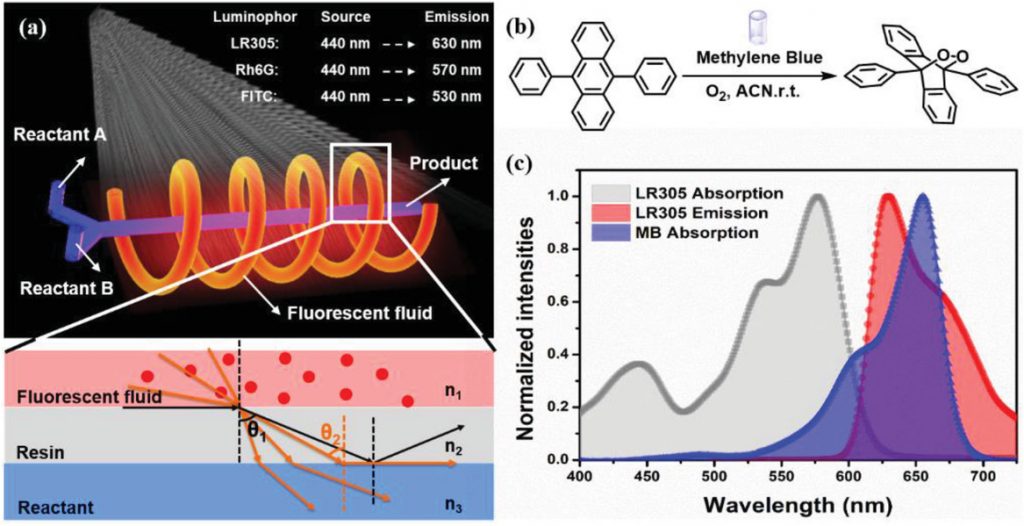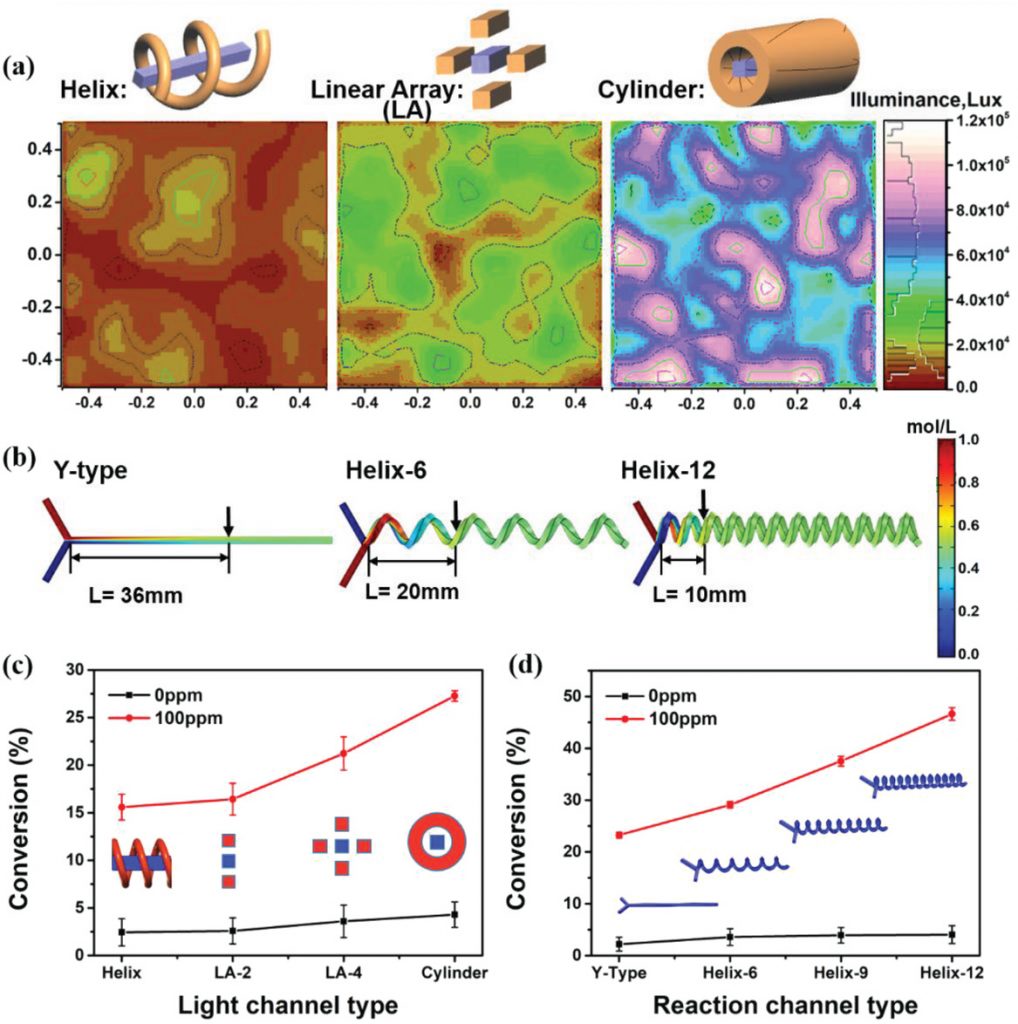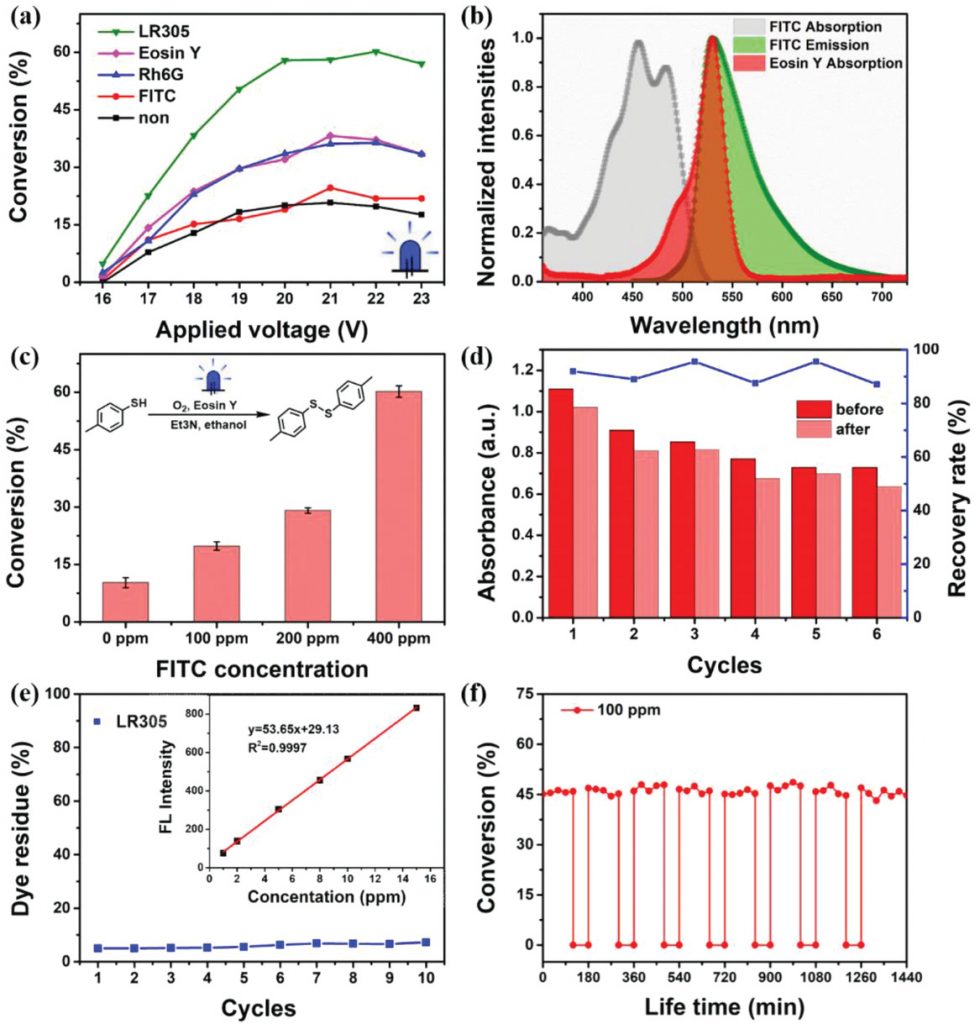 In ‘Fluorescent Fluid in 3D‐Printed Microreactors for the Acceleration of Photocatalytic Reactions,’ Chinese researchers from Dalian University of Technology are finding new ways to create photocatalytic reactions, but realize improvements must be made in creating tools for applications such as harnessing light and other energy. 3D printing can play a part in so many different fields because it allows individuals to create tools, components, or devices they may need to complete experiments and ultimately, processes.
In ‘Fluorescent Fluid in 3D‐Printed Microreactors for the Acceleration of Photocatalytic Reactions,’ Chinese researchers from Dalian University of Technology are finding new ways to create photocatalytic reactions, but realize improvements must be made in creating tools for applications such as harnessing light and other energy. 3D printing can play a part in so many different fields because it allows individuals to create tools, components, or devices they may need to complete experiments and ultimately, processes.
Here, authors Lijing Zhang, Zhigang Zhu, Bofan Liu, Chong Li, Yongxian Yu, Shengyang Tao, and Tingju Li are further exploring methods to regulate light wavelengths as well as creating better standardization in microreactors—using 3D printing techniques to make a microreactor that can hold fluorescent fluid to harness and then convert light.
As is so often the case in science, the researchers work from the basic concept of how light affects organisms in nature, providing them with the impetus to grow through photosynthesis. The authors point out that humans have been working to harness light since they figured out it was a possibility with the use of photoreactors, and accompanying technology. With microreactors, they can make the process of harnessing light more efficient, creating a shorter ‘light path.’
To create the desired photochemical reactions, the authors realize that light with the correct type of wavelength is required—and not easy to come by.
“Some light sources with particular wavelength are costly or hard to obtain, which severely restricts the progress of many photochemical reactions,” state the researchers.

a) ) Schematic illustration of the microchannel structure in FFPM and the light conversion process from the fluorescence fluid to reaction liquid. b) The cycloaddition of DPA to the endoperoxide was used as a model reaction. c) Spectra overlapping scheme of the LR305/MB which provides enhanced photon flux needed for the reaction channel.
Luminophores can be a good alternative, however. These fluorescent dyes or quantum dots allow for less expensive ways to harness light, although the emission profile must match ‘to the maximum absorption of the photocatalyst or photosensitizer used in target photochemical reaction.’ Distribution of the ‘light-converting media’ must be controllable in the 3D space, and it should also offer flexibility in matching reactions to maximize use. For this project, the authors created a general‐used fluorescent fluid photochemical microreactor (FFPM) with both a fluorescent light channel and a reaction channel. The authors point out that these two channels are critical to the FFPM—with its most outstanding feature being that it can translate wavelengths as needed for the reaction.
“With the aid of computer‐aided design, 3D printing can conveniently fabricate the FFPMs with light channels and reaction channels of different structures. After the microreactor was fabricated, fluids containing fluorescent dyes were injected into the light channel to perform the functions of light harvest and wavelength conversion, resulted in a complete FFPM.”

a) Illuminance distribution on the central cross‐section (1 mm2) of the reaction channel illuminated by different shape fluorescent fluid sources. b) Concentration field of numerical simulation analysis of different reaction channels, the optical channel is cylindrical. c) The effect of the light channel structure on the reaction conversion rate, the reaction channel is fixed as a Y type. d) The effect of the reaction channel structure on the reaction conversion rate (condition: blue LED with an emitting peak at 440 nm, 20 V; flow rate at 50 uL min−1).
Harnessing not just light, but also the benefits of 3D printing, the authors were able to enjoy self-sustainability in creating microreactors, along with speed in production and affordability; in fact, 3D printing one photoreactor costs under $5.
“For most commonly used solvents, such as water, toluene, isopropanol, ethanol, and acetonitrile, the photosensitive resin can work continuously for about 4 days. Thus, our FFPM can be applied to various photochemical reactions in different solvents,” stated the researchers.
“This strategy will find extensive application in photochemical mechanism study and valuable chemical compounds production for its operational convenience and flexibility, such as pharmaceuticals, pesticides, and fine chemicals.”
3D printing is commonly connected with a wide range of endeavors targeting energy, allowing not only for the creation of innovative devices but also a variety of different containers and microreactors. Scientists, researchers, and chemists have used 3D printing to manage highly reactive reagents, miniaturization and microfluidics, continuous flow reactors, and more.
Find out more about how 3D printing is assisting in work with photocatalytic reactions here. What do you think of this news? Let us know your thoughts! Join the discussion of this and other 3D printing topics at 3DPrintBoard.com.

a) The effect of different dyes on DPA conversion; b) spectra overlapping scheme of FITC/Eosin Y; c) enhanced conversion for p‐thiocresol achieved by our fluorescent fluid microreactor; d) the absorbance change of LR305 before and after use and the corresponding recovery curve; e) dye residue on the inner surface of light channel, the inset shows the standard curve between fluorescence intensity and LR305 concentration with R2 = 0.9997; f) lifetime study of this photochemical reactor.
Subscribe to Our Email Newsletter
Stay up-to-date on all the latest news from the 3D printing industry and receive information and offers from third party vendors.
Print Services
Upload your 3D Models and get them printed quickly and efficiently.
You May Also Like
Consolidation in AM: How 2025 Is Shaping the Industry’s New Normal
The first half of 2025 has been marked by a clear shift in the additive manufacturing (AM) industry. Companies are no longer just focused on developing new tech by themselves....
Etsy Design Rule Change Reduces Selection of 3D Printed Goods
Online marketplace Etsy has implemented a rule change requiring all 3D printed goods on the site to be original designs. The update to the site’s Creativity Standards states, ¨Items produced using...
U.S. Congress Calls Out 3D Printing in Proposal for Commercial Reserve Manufacturing Network
Last week, the U.S. House of Representatives’ Appropriations Committee moved the FY 2026 defense bill forward to the House floor. Included in the legislation is a $131 million proposal for...
Transforming From Tourist to Native: Duro CEO Michael Corr Explains Why the Company Rebuilt its PLM Software on AI
In these early innings of the AI boom, many market analysts have expressed concern that AI spend has gotten too far ahead of the technology’s proven ability to deliver significant...
































